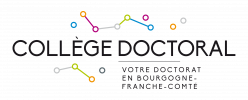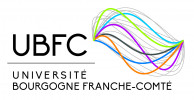© Pint of Science, 2025. All rights reserved.
To see what the eye cannot see. Saving a memory of what we have seen. Technological advances have allowed us to overcome our ability to observe and even to record high-resolution images. But what happens when what we want to see is infinitely small? What if instead of having several photos we had a 3D representation that we could rotate at will? The researchers of this evening will help us to answer these questions.



3D Reconstruction of pollen
Yucely Beb Caal
(PhD student researcher)
A 3D model allows knowing more characterisctics of a sample like its depth and thickness. Due to the small size of some samples, the scanning electron microscope is used to acquire images. In this talk, I will present an application of 3D reconstruction based on self-calibration and tests with images of many samples (biological, geological and artificial).
Improving how medical images are obtained
Nahashon Osinde
(PhD student researcher)
Medical images have been conventionally acquired through top to bottom (raster) scanning. However, in a bid to obtain quality medical images and within a short period of time, patterns like the spiral and flower are interesting to use. In this talk I'll explain how to leverage these 'fun' patterns in acquiring high quality images on a medical machine.
© les contributeurs OpenStreetMap